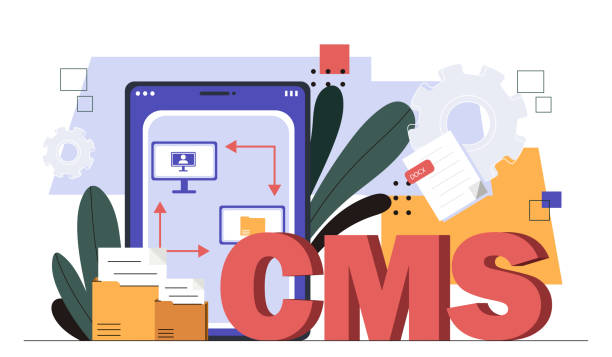Revolutionizing Web Development with Artificial Intelligence

The field of Web Development has always been characterized by rapid evolution. From the static pages of the early internet to the complex, dynamic, and personalized applications we use today, developers have constantly adapted to new tools and methodologies. However, the current shift—the integration of Artificial Intelligence (AI)—is not merely an adaptation; it is a fundamental restructuring of how digital experiences are conceived, built, and maintained.
AI is poised to solve some of the most persistent challenges in modern development: the endless demand for speed, the complexity of cross-platform compatibility, and the necessity of flawless user experience. By automating mundane tasks, predicting errors, and even generating sophisticated code structures, AI is transforming the developer workflow from a manual process into an augmented, highly efficient partnership.
This deep dive explores the current landscape of AI-driven Web Development, providing detailed examples, real-world applications, and the necessary technical context to understand this transformative revolution.
The AI Imperative: Speed, Scale, and Semantic Understanding
Modern web projects are rarely simple. They require microservices architecture, strict security protocols, and, crucially, perfect display across thousands of device variations. AI tools are proving indispensable by introducing semantic understanding—the ability to grasp the intent and context of the code and the desired outcome, rather than just treating lines of text as syntax.
Phase 1: Conceptualization and Requirements Analysis
Before a single line of code is written, AI is already proving its value. Traditional development often involves lengthy discovery phases to translate vague business goals into concrete technical specifications.
AI Application: Automated Requirement Generation and Prototyping
AI platforms can analyze existing business strategies, marketing data, and competitive analysis to suggest optimal feature sets and user flows. Using Generative Adversarial Networks (GANs) and advanced machine learning models, these systems can create high-fidelity prototypes directly from natural language prompts.
Example:
A product manager might input: “We need a user dashboard for tracking fitness goals, accessible on mobile, with a dark theme and immediate synchronization.”
AI translates this:
- Generates wireframes and component libraries.
- Suggests the optimal database schema (e.g., PostgreSQL for relational data).
- Pre-fills placeholder API endpoints based on common fitness application requirements (e.g.,
/api/v1/user/goals/[id]).
This pre-development work, which historically took weeks of designer and architect time, can now be reduced to hours, significantly accelerating time-to-market.
Phase 2: The Core Shift—AI in Code Generation and Refactoring
The most visible impact of AI is in the writing and maintenance of code. Tools like GitHub Copilot, Amazon CodeWhisperer, and proprietary AI assistants are changing the role of the developer from a typist into an editor and architect.
2.1 Contextual Code Generation
AI excels at boilerplate reduction and function completion. These tools analyze billions of lines of public code, allowing them to provide solutions that are syntactically correct and contextually appropriate.
Traditional Challenge: Implementing standard authentication processes (e.g., JWT token verification) often requires repetitive setup in multiple files.
AI Solution (Conceptual Example in JavaScript/Node.js):
A developer simply starts typing a descriptive comment:
// Function needed to verify a standard JSON Web Token,
// extracting the user ID from the payload.
const verifyToken = (req, res, next) => {
// AI automatically suggests the following block based on context (Express framework):
const token = req.headers.authorization.split(' ')[1];
if (!token) {
return res.status(403).send("A token is required for authentication");
}
try {
const decoded = jwt.verify(token, process.env.TOKEN_KEY);
req.user = decoded;
} catch (err) {
return res.status(401).send("Invalid Token");
}
return next();
};
This instant generation of robust, secure, and idiomatic code drastically frees the developer to focus on the unique business logic that truly differentiates the application.
Quote: “AI doesn’t just write code; it democratizes best practices. By suggesting high-quality, secure code patterns derived from petabytes of data, it inherently raises the baseline quality of all software being produced.” — Dr. Elena Rodriguez, Head of AI Research at SynthWeb Labs.
2.2 Refactoring and Optimization
AI isn’t limited to new code; it is a powerful agent for improving existing, legacy systems. AI models can detect code smells, identify inefficient algorithms, and suggest modern, performant alternatives.
Example: Performance Optimization
Consider a function in a large codebase that performs repetitive calculations within a loop, leading to performance bottlenecks.
Original, Inefficient Python Code:
def calculate_discounts(items):
total = 0
# The calculation of the tax_rate is repeated unnecessarily on every iteration
for item in items:
tax_rate = 0.05 + 0.02 # static calculation
discount = item['price'] * 0.10
final_price = item['price'] * (1 - discount) * (1 + tax_rate)
total += final_price
return total
AI-Suggested Refactoring:
An AI optimization tool would flag the unnecessary calculation inside the loop and suggest hoisting it out, greatly improving runtime efficiency for large datasets.
def calculate_discounts(items):
total = 0
# AI hoists the static calculations for efficiency
TAX_MULTIPLIER = 1.05 * 1.02
DISCOUNT_RATE = 0.10 # Assuming 10% discount
for item in items:
# Simplified calculation path
discounted_price = item['price'] * (1 - DISCOUNT_RATE)
final_price = discounted_price * TAX_MULTIPLIER
total += final_price
return total
This proactive approach to optimization is critical for scaling applications and ensuring a smooth user experience, particularly in high-traffic environments.
Phase 3: The AI Transformation of Responsive Design
The integration of Responsive Design is a foundational requirement for modern Web Development. It ensures a seamless experience whether a user is viewing content on a 4-inch phone or a 32-inch monitor. However, achieving pixel-perfect responsiveness across all breakpoints is often the most time-consuming and tedious aspect of front-end development.
AI fundamentally changes this paradigm by moving beyond fixed breakpoints and moving towards truly dynamic, content-aware layouts.
3.1 Predictive Layout Generation
AI systems can analyze the semantic meaning of content (e.g., identifying a hero image, a navigation bar, or a complex data table) and predict the optimal layout constraints for every potential viewport size, eliminating the need for extensive, manual media queries.
Mechanism:
- Input Analysis: The AI takes a single, high-fidelity design (e.g., a desktop view) and understands the hierarchical relationship between components.
- Constraint Learning: It applies learned rules about visual hierarchy and human perception (e.g., text must maintain legibility, CTA buttons must remain prominent).
- Output Generation: It automatically generates the required CSS Grid or Flexbox definitions and media query adjustments.
3.2 Code Example: AI vs. Manual Responsive CSS
In manual development, scaling a complex grid layout often involves writing multiple explicit media queries:
Manual CSS for Responsive Grid:
/* Default: Two columns on desktop */
.product-grid {
display: grid;
grid-template-columns: repeat(2, 1fr);
gap: 30px;
}
/* Medium Screens (Tablets) */
@media (max-width: 992px) {
.product-grid {
grid-template-columns: repeat(1, 1fr); /* Collapse to a single column */
}
}
/* Small Screens (Mobile) */
@media (max-width: 576px) {
.product-grid {
padding: 10px; /* Adjust padding */
}
.product-card img {
height: auto;
}
}
AI-Assisted Approach (Conceptual Output using Modern Frameworks):
AI tools, leveraging utility-first frameworks like Tailwind CSS, can achieve the same result via dynamic class generation that adapts based on learned optimal spacing and sizing:
<div class="product-grid
grid grid-cols-2 lg:grid-cols-1 md:grid-cols-1
gap-8 md:gap-4 p-8
ai-optimized-padding">
<!-- Product Cards generated here -->
</div>
While the code looks similar, the difference is the origin. The AI doesn’t just suggest the lg:grid-cols-1 class; it determines that 992px is the optimal breakpoint for maintaining visual appeal based on the specific content density of the product-card component—a deep, contextual analysis impossible for human developers to perform instantly.
3.3 Accessibility and Responsive Design
AI also ensures that responsiveness adheres to high accessibility standards (WCAG guidelines). As layouts shift, AI verifies contrasting color ratios, ensures sufficient touch targets for mobile interfaces, and validates correct ARIA role assignments, automatically flagging or correcting issues that are often overlooked during rushed manual development cycles.
Phase 4: AI in Quality Assurance, Testing, and Security
Once the code is written and the design is responsive, AI’s role shifts from creation to validation and protection. Automated testing has been routine for years, but AI introduces intelligent testing.
4.1 Intelligent Test Case Generation
Traditional developers write tests based on expected behaviors. AI, however, can analyze the codebase and automatically generate edge-case test scenarios that human developers might miss.
Fuzz Testing and Regression: AI uses machine learning to simulate highly unpredictable user interactions (fuzzing), deliberately searching for crashes, race conditions, and memory leaks. When new features are added, AI instantly updates the regression suite to ensure previous functionality remains intact.
4.2 Proactive Debugging and Remediation
AI debuggers move beyond simply reporting an error line number. They analyze the stack trace, review recent code commits, and often provide the suggested fix inline.
Example Scenario (Debugging a Null Pointer):
- AI Detection: A user reports an error logging in. The system flags a
TypeError: Cannot read properties of null (reading 'username')in the API handler. - Root Cause Analysis: AI scans the dependency chain and finds that the API request handling was recently modified in
v2.1.4, failing to validate the existence of theuser_sessionobject if the user was logged in via a social provider. - Remediation Suggestion: The AI proposes a direct code snippet to implement optional chaining or a null check:
// Suggested fix: Ensure user_session exists before accessing properties const username = req.user_session?.username || 'Guest';
4.3 Security Scanning and Vulnerability Detection
Web development requires constant vigilance against vulnerabilities (e.g., XSS, SQL Injection). While static analysis tools exist, AI-driven scanners offer a substantial advantage. They learn from global vulnerability databases and common attack patterns, enabling them to identify complex, multi-step exploits that evade standard regex-based scans.
If a developer implements an external library, AI checks its known CVE (Common Vulnerabilities and Exposures) status instantly and monitors its usage within the codebase for unsafe function calls.
Phase 5: Hyper-Personalization and UX Enhancement
The ultimate goal of modern Web Development is to deliver personalized experiences. AI is essential here, moving static UIs to dynamic, self-optimizing interfaces.
AI-Driven A/B Testing and Optimization
AI replaces the lengthy, manual process of A/B testing with continuous, multivariate optimization. Instead of testing two versions of a button color, AI continuously tests small variations (e.g., color, placement, text, timing) across different user segments simultaneously. It gathers real-time conversion data and automatically deploys the most effective version to users, leading to fractional but significant performance improvements over time.
Intelligent Content and Layout Presentation
AI analyzes user behavior, demographic data, and current context (e.g., time of day, device, referral source) to dynamically adjust layout and content presentation.
Example: E-commerce Product Page
- User A (First-time visitor, mobile, referred by Instagram): AI prioritizes large, visually appealing product images and a highly visible “Sign Up for Discount” modal.
- User B (Returning customer, desktop, known purchase history): AI minimizes promotional content, highlights technical specifications and loyalty program details, and places the “Add to Cart” button higher based on their known interaction speed.
This level of granular, continuous personalization fundamentally changes the definition of a front-end interface, making it fluid and responsive not just to screen size, but to human intent.
Comparative Workflow Analysis: Traditional vs. AI-Assisted
The productivity gains unlocked by AI are quantifiable. The table below illustrates the dramatic reduction in time spent on repetitive and complex tasks across the Web Development lifecycle.
| Feature | Traditional Web Development | AI-Assisted Web Development | Estimated Time Savings | Impact on Quality |
|---|---|---|---|---|
| Initial Setup / Boilerplate | Manual configuration, dependency installation | Automated project scaffolding via command prompt | 40% | High consistency, fewer environment errors |
| Responsive Design (CSS) | Manual media queries, iterative testing on devices | Predictive breakpoint generation, auto-optimization (SEO Keyword) | 60% | Superior cross-device fidelity |
| Complex Function Generation | Writing and debugging API endpoints (hours) | Instant suggestion of secure, working functions (minutes) | 50-70% | Higher security and fewer logic errors |
| Debugging & Error Fixing | Line-by-line inspection, manual trace logs | Automated root cause analysis, suggested remediation | 30% | Faster resolutions, less downtime |
| UI/UX Optimization | Lengthy A/B testing cycles (weeks) | Continuous, micro-optimization via multivariate testing | 80% | Dynamically updated interfaces, higher conversion |
| Security Scanning | Scheduled, infrequent vulnerability audits | Real-time monitoring and immediate flagging of unsafe code | N/A (Continuous) | Zero-day vulnerability mitigation |
The Road Ahead: Challenges and Ethical Considerations
While the rise of AI in Web Development promises unparalleled efficiency, it introduces significant professional and ethical hurdles that the industry must address.
The Problem of AI Hallucination
Like all large language models (LLMs), code-generating AIs can sometimes “hallucinate”—producing syntactically correct code that is logically flawed or entirely non-functional within the current project context. Developers must retain the critical skill of verifying AI output, ensuring they are editors and auditors, not just passive acceptors of generated code.
Intellectual Property and Licensing
A major ongoing ethical debate revolves around the data used to train these models. Since many AIs are trained on vast datasets of public code (including copyrighted repositories), the legal ownership and licensing implications of the generated code remain complex. Clarity is needed to ensure that AI-generated assets do not inadvertently introduce licensing risk into commercial projects.
Quote: “The machine won’t replace the developer, but the developer who uses the machine will replace the one who doesn’t. The challenge now is shifting the developer skill set from writing syntax to mastering prompt engineering and critical auditing.” — Satya Nadella, CEO of Microsoft (Contextual statement on Copilot and AI).
The Future Role of the Developer
The current trajectory indicates that AI will take over most CRUD (Create, Read, Update, Delete) operations and standard boilerplate configuration. The future developer will focus less on syntax and more on high-level architecture, complex integrations, deep problem-solving, and, crucially, integrating human creativity and empathy into the user experience—tasks that remain uniquely human.
Conclusion: The Augmented Era of Web Development
The revolution spurred by Artificial Intelligence in Web Development signifies the end of the manual era and the beginning of the augmented era. AI is not simply a tool; it is a collaborative partner that increases speed, enhances reliability, and ensures superior quality in outputs, particularly in complex areas like securing optimal Responsive Design across all platforms.
By embracing AI for tasks ranging from initial requirements gathering and intelligent code generation to continuous security monitoring and performance optimization, development teams can accelerate innovation and redirect their creative energy toward solving truly novel problems. The future of the web is being built now, and it is being built faster, smarter, and with a sophisticated intelligence previously unimaginable.





